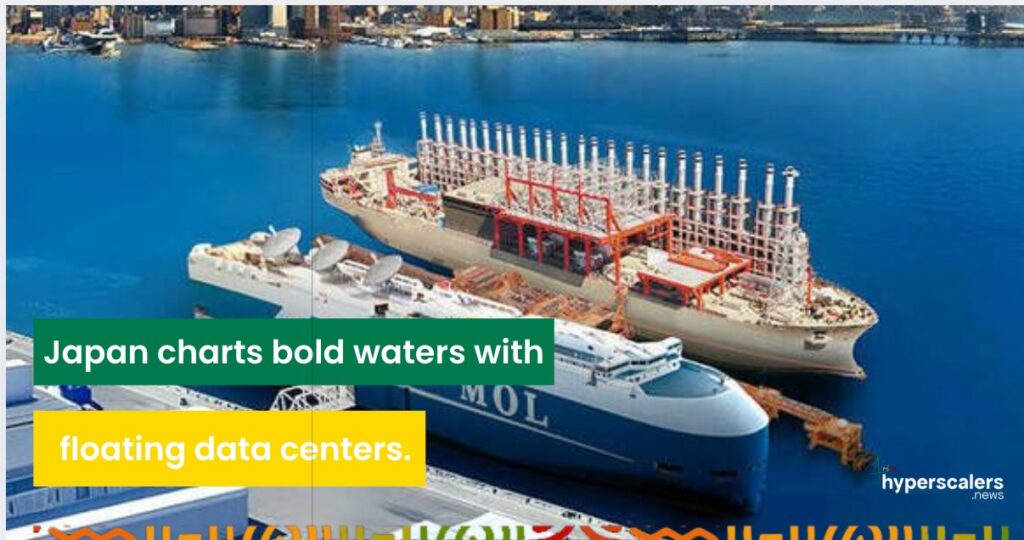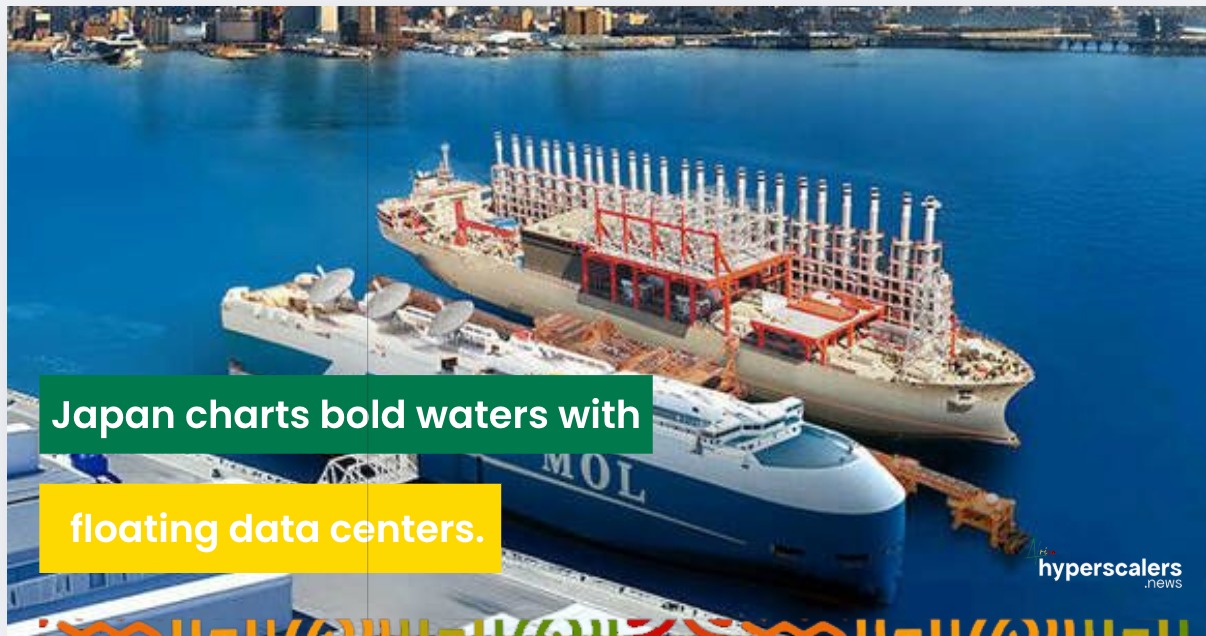As global data center demand strains land and power resources, Japan is steering innovation offshore. In a move that could redefine digital infrastructure, Japanese shipping giant Mitsui OSK Lines (MOL) is transforming one of its vessels into a floating data center—nicknamed a “bit barge” – capable of delivering up to 73 megawatts of IT load while anchored in harbors or operating at sea.
The project is expected to be operational by 2027, with design work concluding this year and the conversion of the 120-meter, 9,731-ton vessel slated for 2026. The facility will draw power either from an onshore grid connection or directly from an adjacent powership, and will employ direct water cooling from seawater or river water, depending on where it is moored.
Rendered images released by MOL show the bit barge outfitted with satellite dishes and connected to the internet via land and submarine cables. Its modular design allows for relocation based on regional demand or operation while at sea, offering flexibility unmatched by traditional land-based data centers.
MOL emphasises several strategic advantages: deployment within a year, avoiding lengthy construction timelines; no need for land acquisition in expensive metropolitan areas; and the ability to operate in regions with limited grid capacity, especially when paired with powerships.
The initiative advances under a memorandum of understanding with Kinetics, a division of Turkish power ship operator Karpowership, enabling the bit barge to receive power directly from mobile generation units. “Even in areas experiencing power shortages, offshore data centers can begin operations immediately,” MOL stated.

Tomoaki Ichida, MOL’s Managing Executive Officer, described the partnership as a strategic use of the group’s shipping assets to support digital infrastructure. Mehmet Katmer, CEO of Kinetics, added, “By pairing mobile power generation with floating data infrastructure, we are addressing critical market bottlenecks while enabling faster, cleaner, and more flexible digital capacity expansion.”
Data centers in water aren’t new – Subsea Cloud, HiCloud, and Microsoft have all explored underwater facilities. However, floating data centers remain a relatively new concept, offering unique flexibility and deployment advantages.
This push comes amid surging global demand for data center capacity driven by AI and digitalisation, as grid bottlenecks in countries like the U.S. delay new builds by up to five years.
As data needs grow exponentially, floating data centers could shift from novelty to necessity, unlocking rapid deployment, sustainability benefits, and flexible capacity in regions where traditional builds face land, power, or permitting constraints. For Japan, harnessing its maritime expertise for digital infrastructure may be the next frontier in staying competitive in the global data economy.





